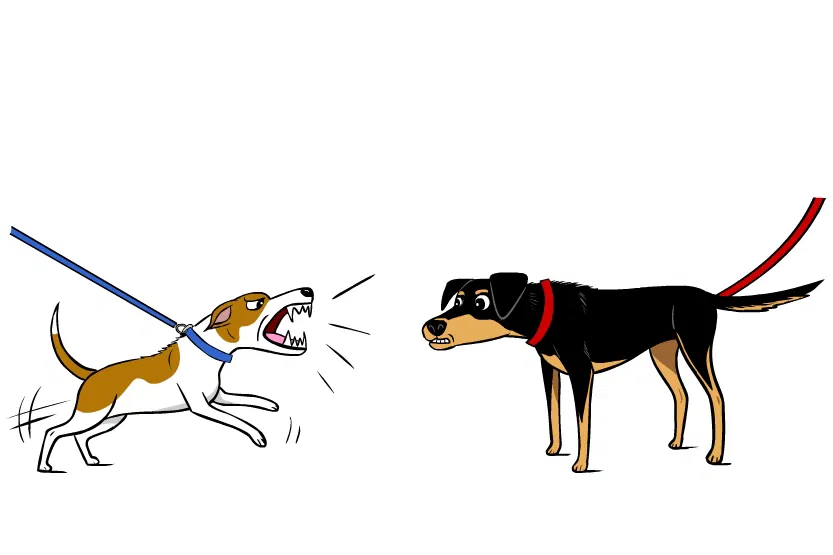At Alaska Dog Works, we hear it all the time:
“I can’t walk my dog without them lunging, barking, or pulling like crazy.”
If you’ve ever dreaded taking your dog for a walk, avoided certain trails, or felt embarrassed by your dog’s behavior in public, you’re not alone. In fact, leash reactivity and poor leash manners are among the most common training concerns voiced by dog owners, not just here in Alaska, but nationwide.
In this post, we want to do something different.
We’re not going to lecture you or run through a list of “do this, don’t do that.”
Instead, we’re going to tell you the story of someone like you—a fellow dog owner in Alaska who came to us frustrated, overwhelmed, and ready for a change.
And we’re going to show you exactly how we fixed it.
Meet Katie and Her Husky Mix, Bear
Katie lives just outside Anchorage and works remotely. When she adopted Bear, a Husky mix from a local rescue, she was hoping for a trail companion and cozy evenings on the couch. Instead, she got an anxious, reactive dog who lost his mind every time he saw another dog, or worse, a moose, on the trail.
“I love Bear, but I was honestly scared of him on walks,” she told us in her intake call. “It’s not aggression, I know that, but he’s strong. When he reacts, he lunges hard, and I’ve fallen more than once.”
Katie tried YouTube videos, treat training, retractable leashes, and even a few local and inexpensive group classes. But nothing stuck. And her confidence as a dog owner started to erode.
The Real Issue Behind the Reactivity
When Katie came to Alaska Dog Works, we immediately started with our structured evaluation process.
We don’t believe in cookie-cutter programs. Every dog, and every human, has their own story. And that’s why our first step is always to observe the dog’s behavior, understand the triggers, and evaluate the relationship between dog and handler.
Here’s what we found:
Bear was hyper-alert, always scanning for potential threats or excitement.
He had no impulse control on leash, despite knowing some basic cues.
Katie’s body language and leash handling were communicating anxiety, not leadership.
Bear lacked a structured outlet for his energy beyond daily walks.
In short: Bear wasn’t a “bad dog.” He was a smart, under-stimulated, confused dog without a calm leader.
Our Plan: Structured, Balanced Training for Real Results
Katie enrolled Bear in our Peak Performance Program, customized for leash reactivity.
Here’s what we focused on:
1. Relationship Reset
We had Katie implement our foundational “Trust Before Training” framework, which included:
Structured feeding routines
Calm crate conditioning
Engagement games to rebuild focus and attention
Before we even addressed reactivity, we needed Bear to look to Katie as his guide.
2. Leash Manners & Handler Skills
We taught Katie:
Correct leash handling techniques using a 6-foot fixed lead, not a retractable
How to read Bear’s body language before a reaction occurred
Marker training to reinforce desired behavior
When and how to use gentle corrections, when necessary
This gave both of them confidence.
3. Controlled Exposure & Desensitization
With our trainers guiding every step, Bear was gradually exposed to controlled distractions, other dogs, people, wildlife scents, all at a safe distance and under structured exercises.
As Bear’s tolerance increased, we reduced distance and increased difficulty, always rewarding calm behavior and reinforcing a neutral emotional response.
The Breakthrough Moment
It didn’t happen overnight, but by week four of the program, Katie sent us an update:
She and Bear were walking in Kincaid Park. A jogger with two Labradors passed them on the trail.
Bear looked.
Ears perked.
And then… nothing.
No lunge. No bark. No panic.
Just a dog walking beside his owner.
“I cried,” Katie admitted. “For the first time since I adopted Bear, I felt proud. I felt like we were a team.”
What Makes Our Training Different?
Dog owners across Alaska turn to Alaska Dog Works because we don’t just train dogs. We coach people. We give you the tools, language, and strategy to turn chaos into calm, whether you’re dealing with reactivity, aggression, or just a lack of control.
Here’s why our programs work:
We evaluate the whole dog, not just the symptom
We tailor the program to your lifestyle and goals
We work one-on-one so you’re not just another client
We’re based in Alaska, we get the terrain, the wildlife, and the unique challenges you face
We don’t quit until you and your dog succeed
We’ve helped hundreds of Alaskans just like Katie—and we can help you too.
What You Might Be Feeling Right Now
If this story hits close to home, chances are you’ve had at least one of these thoughts:
“Maybe my dog just isn’t trainable.”
“I’ve tried everything, it’s hopeless.”
“I’m embarrassed to even ask for help.”
Let us be clear:
You are not alone. And it’s not too late.
Whether your dog is a 4-month-old pup or a 7-year-old rescue, the behavior you’re struggling with can be addressed. But not with guesswork or gimmicks.
With structure. With experience. And with a real plan.
Is This Your Story Too?
If you’re still reading, you’re probably a lot like Katie.
You love your dog. You’re willing to put in the work. You just need a partner in the process.
That’s what we do at Alaska Dog Works.
We don’t train perfect dogs.
We train real dogs. With real issues. For real life.
What’s Next?
If leash reactivity is making your walks stressful instead of joyful, we invite you to schedule a free strategy call today.
We’ll talk through your specific challenges, give you immediate guidance, and map out the best path forward, whether it’s one-on-one training, a behavior program, or a customized in-home session.
Call us today at 206-752-DOGS
Let’s fix this—together.










